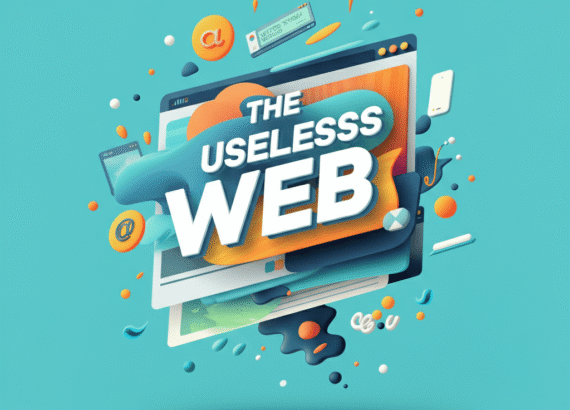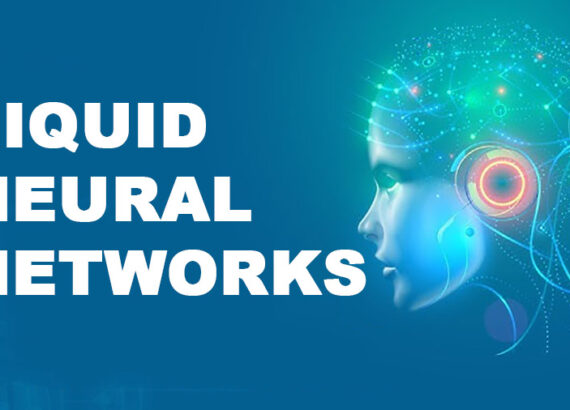What Is Educational Technology and its importance
Educational technology has revolutionized the field of education, transforming the way students learn and how teachers deliver instruction. In today’s digital era, educational technology encompasses a wide range of tools, techniques, and resources that integrate technology into the learning process. This article aims to explore the concept of educational technology, its historical evolution, and its vital role in teaching and learning. Additionally, it will discuss the key components of educational technology, the benefits it offers, the challenges faced in its implementation, future trends, and provide recommendations for effective utilization. Understanding the importance of educational technology is crucial in preparing students for the demands of the 21st century and ensuring their success in an increasingly digital world. Learn how educational technology is revolutionizing classrooms and empowering educators to create innovative and personalized learning environments.
1. Introduction to Educational Technology
Definition of Educational Technology
Educational technology may sound like a fancy term, but it’s really just a way to describe how technology is used in education. It’s all about using those nifty gadgets and digital tools to enhance teaching and learning experiences. So, think of it as the marriage of education and technology, with education being the wise and experienced partner, and technology being the trendy and innovative one.
The Role of Technology in Education
Technology has become an integral part of our lives, and it’s no surprise that it has also found its way into the classroom. From laptops to interactive whiteboards, technology has changed the way we teach and learn. It has opened up new possibilities, allowing students to access information and resources from around the world, and giving teachers the tools to create engaging and interactive lessons. In short, technology is like that cool friend who helps make learning more fun and effective.
2. The Evolution of Educational Technology
Historical Overview of Educational Technology
Educational technology has come a long way, my friends. Back in the day, it was all about pencils and paper, and maybe a trusty abacus if you were lucky. But as time went on, we saw the rise of overhead projectors, then computers, and now we have a whole array of digital tools at our disposal. It’s like going from riding a horse to driving a spaceship!
Emergence of Digital Tools in Education
Ah, the digital revolution. It’s like the cherry on top of the educational technology cake. With the advent of computers, tablets, and smart phones, we’ve seen a whole new world of possibilities open up in the education sector. Suddenly, we can access vast amounts of information with just a few clicks, collaborate with other learners from different corners of the globe, and even create virtual simulations to enhance our understanding. It’s like having a personal tutor in your pocket, minus the hefty price tag.

3. The Role of Educational Technology in Teaching and Learning
Enhancing Instructional Delivery with Technology
Gone are the days of boring, one-size-fits-all lectures. Thanks to educational technology, teachers can now spice things up and make learning more interactive and engaging. From multimedia presentations to online quizzes, technology allows educators to tailor their teaching methods to suit different learning styles. So, whether you’re a visual learner, an auditory learner, or even a kinaesthetic learner who likes to get hands-on, there’s a tech tool out there just for you.
Personalized Learning through Educational Technology
One of the coolest things about educational technology is that it opens up a world of personalized learning opportunities. No two learners are the same, and technology recognizes that. With adaptive learning software and online platforms, students can learn at their own pace and receive customized feedback and support. It’s like having a personal tutor who knows exactly what you need and how to help you succeed. Who needs a study buddy when you’ve got technology on your side?

4. Key Components of Educational Technology
Hardware and Software Tools
When we talk about educational technology, we can’t forget about the hardware and software that make it all possible. From laptops and tablets to interactive whiteboards and virtual reality headsets, these tools are the workhorses of the educational technology world. And let’s not forget about the software, those magical programs and applications that turn those devices into powerful learning tools. So, if you ever find yourself staring at a computer screen, just remember that it’s not just a machine; it’s a gateway to infinite knowledge.
Educational Software and Applications
Software and applications in the educational realm are like superheroes in disguise. They may look like ordinary computer programs or mobile apps, but they have the power to transform learning experiences. Whether it’s educational games that make math fun, language learning apps that help you master a new tongue, or virtual labs that allow you to conduct experiments without the mess, these software and applications are the secret weapons of educational technology. So, next time you download an educational app, remember that you’re not just getting a time-waster; you’re unlocking a whole new world of learning.
5. Benefits and Importance of Educational Technology
Improved Engagement and Motivation
Educational technology has the magical ability to transform even the most boring subjects into engaging and exciting learning experiences. With the help of interactive videos, gamified quizzes, and virtual simulations, students can be motivated to actively participate in their own education. Say goodbye to passive learners and hello to students who are eager to explore and discover knowledge.
Enhanced Access to Learning Resources
Gone are the days of heavy backpacks stuffed with textbooks. Educational technology has opened up a world of online resources that can be accessed anytime, anywhere. From e-books and online libraries to educational apps and websites, students now have a universe of information at their fingertips. This accessibility ensures that learning is not confined to the four walls of a classroom, but can happen in the comfort of one’s own home or even during a long bus ride.

6. Challenges and Considerations in Implementing Educational Technology
Infrastructure and Connectivity Issues
While educational technology offers immense potential, it’s not without its hurdles. Many schools and educational institutions face challenges in terms of infrastructure and connectivity. Slow internet speeds, outdated computer systems, and limited access to devices can hinder the effective implementation of educational technology. It’s like trying to drive a Formula One car on a dirt road. It just doesn’t work smoothly.
Training and Professional Development
Integrating educational technology into the classroom requires skilled teachers who can navigate the digital realm with ease. Professional development programs and ongoing training are crucial to ensure educators are well-equipped to utilize educational technology effectively. After all, you don’t want a teacher fumbling with a mouse and keyboard while the students have already written a thesis using voice recognition software.
7. Future Trends in Educational Technology
Artificial Intelligence in Education
Move over, human teachers! Okay, not really. But artificial intelligence (AI) is making its way into the realm of education. AI-powered tutoring systems, adaptive learning platforms, and intelligent virtual assistants are revolutionizing the way students learn. These technologies can provide personalized feedback, adapt to individual learning styles, and even predict learning gaps. It’s like having a teaching sidekick that knows you better than anyone else.
Virtual and Augmented Reality in the Classroom
Remember when field trips were the highlight of school? Well, virtual and augmented reality (VR/AR) are bringing those field trips into the classroom. With VR/AR technology, students can explore ancient civilizations, travel through the human body, and even visit the surface of Mars without leaving their desks. It’s like having a time machine without the risk of accidentally altering history.

8. Recommendations for Utilizing Educational Technology
Effective Integration Strategies
Integrating educational technology successfully requires careful planning and implementation. It’s not just about throwing a bunch of shiny gadgets at students and hoping for the best. Educators should develop clear goals and objectives, align technology usage with curriculum standards, and provide ongoing support and guidance to students. It’s like baking a cake – you need the right ingredients and a well-written recipe to avoid a technological disaster.
Ethical and Responsible Use of Educational Technology
With great power comes great responsibility, and educational technology is no exception. It’s essential to teach students about the ethical and responsible use of technology. This includes issues like digital citizenship, online safety, and data privacy. After all, you don’t want students accidentally sharing their entire life story with a Nigerian prince who promises them a million-dollar scholarship.
So, embrace the power of educational technology, but do it with care and consideration. With the right approach, we can create engaging learning experiences, enhance accessibility, and prepare students for the future in a responsible and ethical way. Let’s march into this digital frontier together, armed with knowledge and a sense of humor. After all, education should be enlightening, empowering, and infused with a healthy dose of sarcasm.
9. Conclusion
In conclusion, educational technology has become an indispensable tool in modern education. Its ability to enhance engagement, personalize learning, and provide access to vast resources has transformed the educational landscape. However, successful implementation requires addressing challenges such as infrastructure limitations and providing adequate training for educators. As we look to the future, emerging technologies like artificial intelligence and virtual reality hold tremendous potential in revolutionizing education further. To leverage the full benefits of educational technology, it is essential for educators, policymakers, and stakeholders to collaborate, invest in technology infrastructure, and promote responsible and ethical use. By harnessing the power of educational technology, we can unlock endless possibilities for fostering effective and impactful learning experiences for students of all ages.

FAQs
1. What exactly is educational technology?
Educational technology refers to the integration of technology tools, techniques, and resources into the teaching and learning process. It encompasses a wide range of hardware, software, and digital platforms that aim to enhance instructional delivery, promote engagement, and provide personalized learning experiences.
2. How does educational technology benefit students?
Educational technology offers numerous benefits to students. It improves engagement by incorporating interactive and multimedia elements into lessons, making learning more enjoyable and motivating. It also provides access to a vast array of educational resources and online learning platforms, enabling students to explore and learn at their own pace. Additionally, educational technology supports personalized learning, allowing students to tailor their educational experience to their individual needs, strengths, and interests.
3. What is the implementing educational technology?
Implementing educational technology can present several challenges. Infrastructure limitations, such as unreliable internet connectivity and insufficient technical resources, can hinder its effective use. Additionally, educators may require training and support to effectively integrate technology into their teaching practices. Furthermore, ensuring equitable access to technology for all students and addressing concerns related to privacy and security are important considerations in implementing educational technology.
4. Future hold for educational technology?
The future of educational technology is promising. Emerging technologies like artificial intelligence, virtual and augmented reality, and adaptive learning systems hold immense potential in transforming education. These innovations can revolutionize personalized learning, provide immersive and interactive educational experiences, and enable educators to tailor instruction based on individual learner needs. As technology continues to advance, it is crucial to stay up-to-date with emerging trends and leverage these tools to create engaging and effective learning environments.
Thank you for reading 🙂
If you want to build your website in an affordable price contact: www.nextr.in
Read this: How To Become A Web Developer?


















